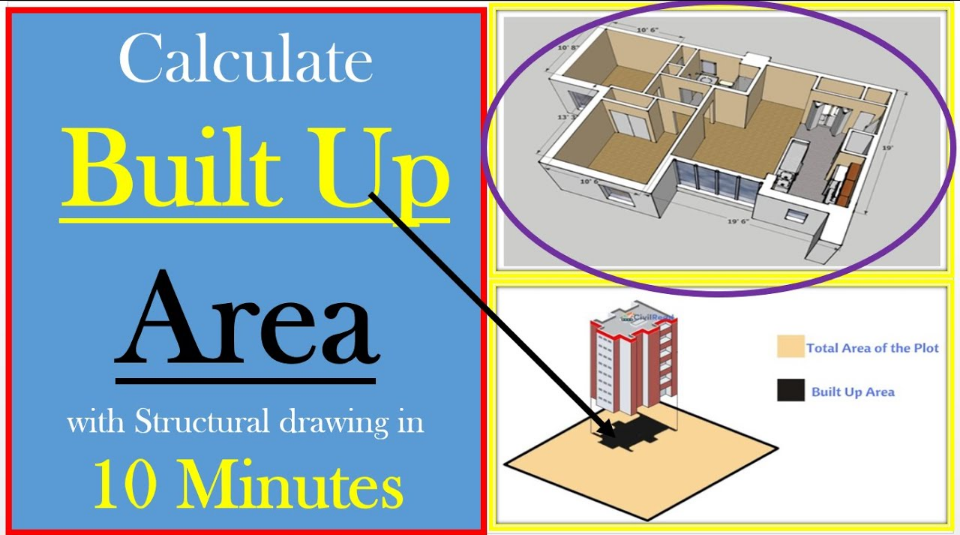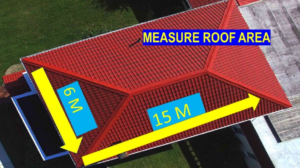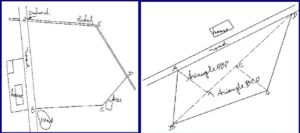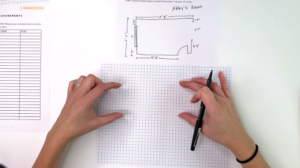Calculating the area of your home is essential for planning renovations. It helps determine material quantities, costs, and labour needs. Whether you’re redoing flooring, painting walls, or planning an extension, accurate measurements are crucial. This guide provides a step-by-step process with a realistic example.

Step 1: Understand the Layout of Your Home
Before measuring, examine the layout of your home. Most rooms will have simple geometric shapes like rectangles or squares, but some areas may be irregular.
Real-Life Example:
Sarah plans to renovate her three-bedroom house. She wants to install new flooring in the living room, dining room, kitchen, and hallway. The living room is rectangular, the dining room is square, and the kitchen has an L-shaped layout.
Step 2: Gather the Tools You’ll Need
To measure accurately, you’ll need:
- A tape measure or laser distance measurer
- Graph paper or a notebook to record dimensions
- A calculator
Sarah uses a tape measure and a notebook to note dimensions and sketch her floor plan.
Step 3: Measure Each Room Separately
Living Room (Rectangular)
Sarah measures the length and width of the living room:
- Length is 6 metres
- Width is 4 metres
To calculate the area, she multiplies the length by the width:
- Six times four equals twenty-four square metres
Dining Room (Square)
For the square dining room, Sarah measures one side:
- Side length is 5 metres
The area of a square is the side length multiplied by itself:
- Five times five equals twenty-five square metres
Kitchen (L-Shaped)
Sarah divides the kitchen into two rectangles for easier calculation:
- The first rectangle is 3 metres long and 2 metres wide
- The second rectangle is 4 metres long and 2 metres wide
She calculates the areas of both:
- Three times two equals six square metres for the first rectangle
- Four times two equals eight square metres for the second rectangle
Adding both areas together:
- Six plus eight equals fourteen square metres
Hallway (Narrow Rectangle)
For the hallway, Sarah measures:
- Length is 10 metres
- Width is 1.2 metres
She calculates the area:
- Ten times one point two equals twelve square metres
Step 4: Account for Irregularities
The living room has a built-in fireplace occupying part of the space. Sarah measures its dimensions:
- The fireplace is 1.5 metres by 0.5 metres
She calculates the area of the fireplace:
- One point five times zero point five equals zero point seven five square metres
She subtracts this from the total area of the living room:
- Twenty-four minus zero point seven five equals twenty-three point two five square metres
Step 5: Add Up the Total Area
Sarah adds the areas of all the spaces to find the total renovation area:
- Living room is twenty-three point two five square metres
- Dining room is twenty-five square metres
- Kitchen is fourteen square metres
- Hallway is twelve square metres
Adding them together:
- Twenty-three point two five plus twenty-five plus fourteen plus twelve equals seventy-four point two five square metres
Step 6: Double-Check Your Work
Sarah re-measures each room and confirms her calculations to ensure accuracy.
Step 7: Plan for Materials and Costs
Knowing the total renovation area of seventy-four point two five square metres, Sarah contacts a flooring supplier. To account for waste, she adds a ten percent buffer:
- Seventy-four point two five multiplied by one point one equals eighty-one point six eight square metres
She purchases enough flooring to cover eighty-two square metres.
Tips for Accurate Measurements
- Break Down Irregular Spaces: Divide them into smaller shapes to simplify calculations.
- Subtract Non-Renovated Areas: Exclude spaces with built-in furniture or other immovable features.
- Use Technology: Apps or online calculators can save time and reduce errors.
- Double-Check Measurements: Even small inaccuracies can cause significant problems in large projects.
Calculating your home’s area for renovations can seem daunting, but with careful planning and detailed measurements, it becomes manageable. By following these steps and using Sarah’s example as a guide, you can ensure accurate calculations, avoid costly mistakes, and confidently move forward with your renovation project.



